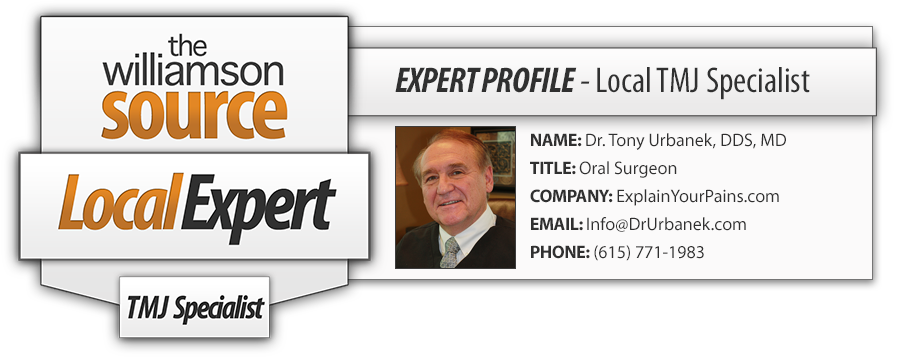 Last week, in the first article of our series on the Temporomandibular Joint (TMJ), and Termporomandibular Joint Disorder (TMD), we discussed that TMD is a progressive condition in which joint inflammation eats away at the cushioning, and sometimes the bone surrounding the Temporomandibular Joint.
Last week, in the first article of our series on the Temporomandibular Joint (TMJ), and Termporomandibular Joint Disorder (TMD), we discussed that TMD is a progressive condition in which joint inflammation eats away at the cushioning, and sometimes the bone surrounding the Temporomandibular Joint.
TMD can often be confused with any of the following symptoms, including headache, earache, neck pain, jaw pain, dizziness and ringing and/or fullness in the ears.
Dr. Tony Urbanek, a board certified Oral and Maxillofacial Surgeon who earned his medical degree from Vanderbilt University, has been specializing in the treatment of TMD for more than 30 years.
According to Dr. Urbanek, the Temporomandibular Joint is just like any other joint except it has one unique characteristic: this joint operates in two different stages, which are rotation and translation (comes out of socket). A cushion is located in between the ball and socket of this joint. When the joint is overused, it causes damage to this cushion, which can eventually lead to TMD.
One treatment option for TMD is Dr. Urbanek’s ExplainMyPain medical device (patent pending), which is designed to take the pressure off the back teeth, and off the Temporomandibular Joint. The back teeth are the areas where stress, damage and inflammation to the joint occur.
Dr. Urbanek’s ExplainMyPain device is made of non-porous acrylic and only allows the front teeth to touch, leaving a small space between the back teeth. By creating this space, the patient is no longer able to put pressure on the joint, which relieves the inflammation in the TMJ. Once the inflammation is relieved, the symptoms of TMJ/TMD will fade as well. To see more about Dr. Urbanek’s ExplainMyPain device, click here.
Look for next week’s article in which you will learn how Dr. Urbanek diagnoses TMD.


















